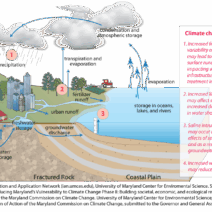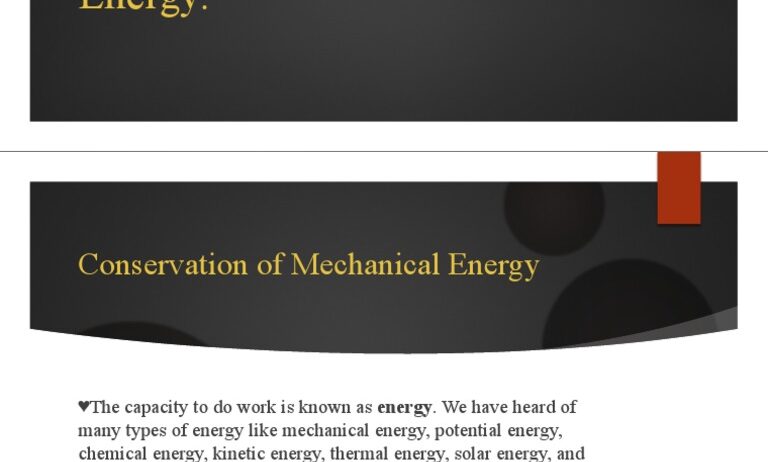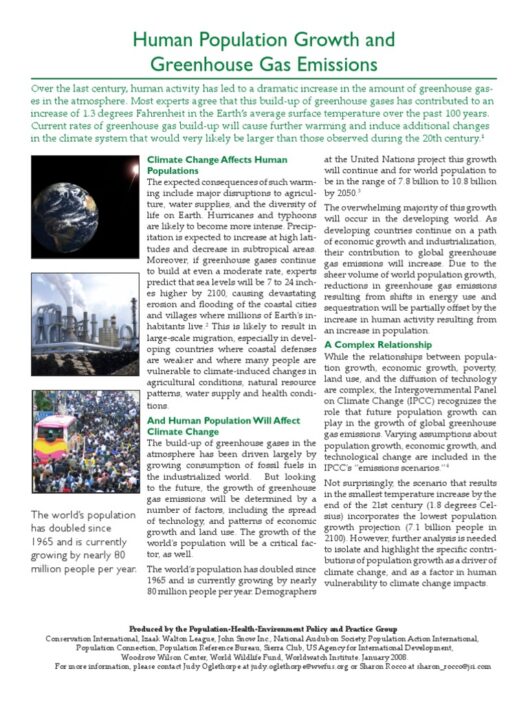The conservation of mechanical energy is a fundamental principle in physics that asserts that the total mechanical energy in an isolated system remains constant, provided that only conservative forces are acting upon it. This concept introduces a profound understanding of energy transformation and equilibrium, facilitating insights into various phenomena ranging from simple pendulums to celestial motions. It compels us to reevaluate our perception of energy and its pervasive role in natural processes.
At its core, mechanical energy is the sum of potential energy and kinetic energy. Potential energy, often associated with gravitational forces, is the energy stored in an object due to its position or state. For instance, a rock perched atop a cliff possesses gravitational potential energy because of its elevated position in relation to the ground. In contrast, kinetic energy pertains to the energy of motion. An object in motion, such as a rolling ball, exhibits kinetic energy that is dependent on its mass and velocity.
The mathematical formulation underlying this principle can be succinctly expressed through the equation:
Mechanical Energy (ME) = Kinetic Energy (KE) + Potential Energy (PE)
To fully appreciate the implications of this relationship, consider the phenomenon of a swinging pendulum. At its highest point, the pendulum’s energy is entirely potential, as it momentarily pauses before reversing direction. As it descends, potential energy is converted into kinetic energy, peaking at the lowest point of its swing. This cyclical interchange illustrates the mechanics of energy conservation beautifully.
However, the conservation of mechanical energy is contingent upon the absence of non-conservative forces, such as friction and air resistance. These forces dissipate mechanical energy, transforming it into thermal energy, and disrupting the delicate equilibrium. Hence, while the conservation principle holds in ideal scenarios—where no external forces interfere—it often diverges from reality in practical applications.
Exploring the implications of this principle allows for numerous applications in various fields, notably in engineering and environmental science. Engineers utilize the conservation of mechanical energy principle for designing efficient machines and vehicles. By maximizing the conversion of energy forms and minimizing losses due to friction, engineers create systems that perform optimally.
Additionally, understanding this principle is crucial in the realm of renewable energy. In wind turbines, mechanical energy generated through wind movement is converted into electrical energy, exemplifying the transition of energy forms that aligns with the conservation principle. By embracing renewable sources, society not only adheres to natural laws but also fosters sustainability, reducing atmospheric degradation caused by conventional energy sources.
The conservation of mechanical energy paradigm also offers intriguing insights into natural phenomena. For example, in roller coasters, the initial potential energy at the peak of a hill translates into kinetic energy as the car descends, providing a thrilling experience while exemplifying mechanical energy conservation. Such examples beckon us to ponder the intricate dance of energy conversions at play in everyday life.
Moreover, the principle is invaluable in understanding celestial mechanics. The orbits of planets and moons showcase the delicate balance of gravitational forces and motion. As celestial bodies move within their gravitational fields, they exchange potential and kinetic energy, exemplifying conservation principles on a cosmic scale. In this sense, the conservation of mechanical energy serves as a universal law, governing the behavior of both earthly and extraterrestrial systems.
As we delve deeper into the energy landscape, an important aspect emerges: the implications of energy conservation extend beyond physics into environmental considerations. The conservation of mechanical energy is intrinsically linked to the broader theme of energy conservation in our daily lives. By recognizing the necessity of maximizing efficiency and minimizing waste, we empower ourselves to instigate a paradigm shift toward a more sustainable and environmentally friendly society.
The interplay between energy conservation and environmental stewardship is particularly evident in discussions surrounding climate change. The transition from fossil fuels to cleaner energy sources underscores the urgent need for conserving mechanical energy in the pursuit of sustainability. Acknowledging the energy losses incurred by traditional energy generation methods compels us toward innovative solutions—be it in efficient public transportation systems or advancements in energy storage technologies.
Furthermore, educational initiatives aimed at raising awareness around energy conservation can catalyze behavioral change. Integrating principles such as the conservation of mechanical energy into curricula fosters curiosity and empowers future generations to adopt more sustainable practices. By piquing interest in the natural world’s mechanics, we nurture a population equipped to address pressing environmental challenges.
In conclusion, the conservation of mechanical energy transcends its role as a mere physical principle. It compels a shift in perspective, encouraging a deeper understanding of energy’s multifaceted nature and its pivotal role in sustainable practices. Through interconnecting the domains of physics, engineering, and environmental science, we cultivate a comprehensive understanding of energy conservation that resonates across disciplines. As humanity navigates an age fraught with ecological dilemmas, the principle of mechanical energy conservation illuminates a path toward innovation and responsibility.
The intricacies of this principle beckon us to remain curious and engaged, promising a brighter, more sustainable future. By embracing the notion that energy is neither created nor destroyed—it merely transforms—we unveil the myriad possibilities that lie ahead in our quest for a harmonious balance with the natural world.







